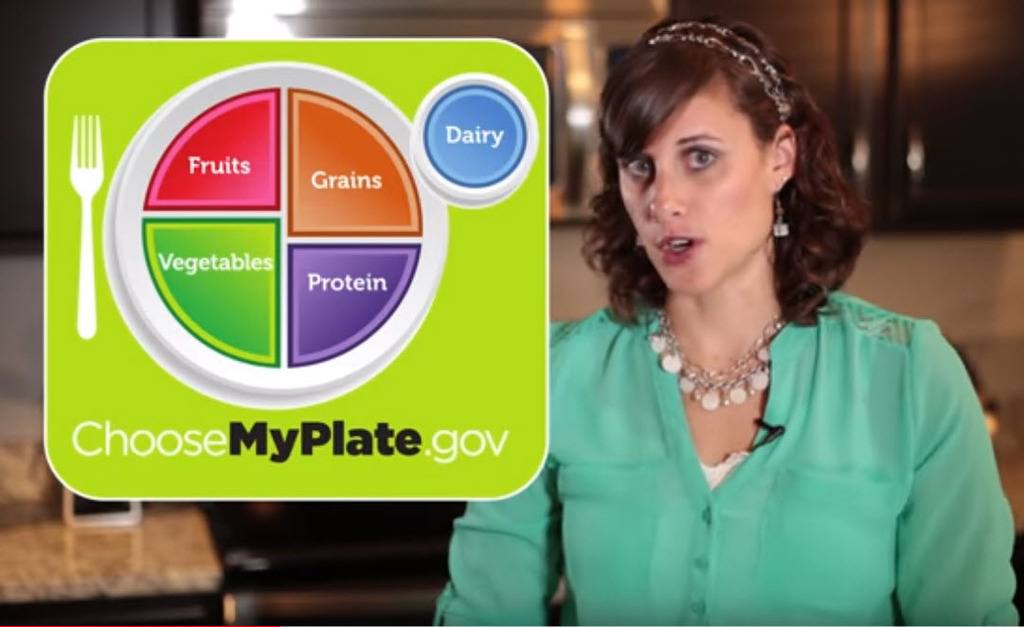How to Raise Emotionally Healthy Children
One of the main reasons that people are emotionally unhealthy is that they are living a life of codependency.
Parents can live co-dependently on their children, or the children can be codependent on their parents.
Codependency is a problem that continues to recur through the generations. Parents can start to help their children become emotionally healthy and live independently when they learn how to live their own lives separately from their children. Parents might even have to make a conscious effort to change these behaviors that might have been plaguing their own families for generations.
It can be hard to determine if there are codependency issues in your family.
Many times the problems are easy to deny and sometimes even more natural to hide.
Sometimes you might not even realize that you are codependent upon your children.
There are some signs of codependency that you can consider to determine if this is something that is a problem for you.
Questions to Ask Yourself to Find Out if You are Co-Dependent Upon Your Child
Do you find yourself overly focused on your child?
Do you suffer from low self-esteem?
Does your child suffer from low self-esteem?
Do you practice non-assertive communication?
Do you find yourself denying or devaluing your needs or the needs of yourself or your child?
Do you find yourself devaluing the wants or feelings of yourself or your child?
Do you have poor boundaries?
Do you feel that you need to control the things that your child says or does?
If you answered yes to more than one of these, the then chances are that you have at least some codependency issues with your child.

Your child is going to learn a lot about himself/herself and how to communicate things like their own needs by how they interact with you.
It is imperative to examine how you relate with your child to see if they can develop healthy emotions.
If you want your child to be an emotionally healthy adult, then you should make sure that the following are happening with them.
Is your child about to express free thoughts, observations, and feelings?
Do you try to maintain equality in your home and make it fair for everyone?
Are you able to have healthy communication with your child?
Do you have reasonable rules for your child based on their age and ability?
Are you supportive and nurturing of your child’s needs?
Do you have healthy boundaries with your child?
Are you able to problem solve with your child?
If you did not answer yes to at least three of these things, then you probably need to work on these so that your child can develop into a healthy and productive member of society as an adult.
There are some things that you can do as a parent so that you can help your child to become a healthy adult. The following are some of the critical things for you to think about.
You need to allow your child to have information without making that information dependent upon behavior or using it as a reward.
Make sure that they feel comfortable expressing how they feel and what is going on with them.
You must show your children respect.
If you do not respect your child, then it is going to be hard for them to learn how to respect you and your authority.
Make sure that your child knows that you understand that sometimes they are going to be angry or have expressions that might not be positive.
You can not fix feelings, but instead, you need to work with your child to resolve why they feel that way.
Talk to your child about the boundaries that they want to have. Make sure that you respect these boundaries.
Allow your child to be independent in ways that are age appropriate. You should also give your child some responsibility that is appropriate for their age and allow them to make some decisions.
You need to have reasonable rules and punishments that are humane. Most important here is that punishments do not embarrass your child or cause them mental duress.
Finally, you must nurture your child. You need to be attentive to their emotional and physical needs. Plus you have to make sure that you are not reserving your love based upon your child’s behavior.
Doing these things is going to help you to make sure that you have an emotionally well-developed child who is not codependent on you.
When I was a senior in college, studying Early Childhood Education, I was a little worried about getting a job, and wondered if I should get licensed to teach older grades as well.
But my adviser reassured me, she said: “Kathleen, any day now, there will be public early childhood programs everywhere.” 30 years later, only a fraction of the children who need high quality early childhood programs have access to them, which is why I’m here to talk to you today.
This is a story about the single most important construction a society ever undertakes. It is about what is required to build a physically, cognitively, socially, and emotionally healthy child. It is a process, is complex, is the most challenging feat of engineering and a process that is easily thwarted by poverty and stress.
Healthy children do not come pre-assembled; work is required.
This story begins with 100 North Carolina babies, and their amazing journey.
Their life trajectories were changed by a single intervention, high-quality educational child care.
They remained part of one of the largest studies of child development and one of the most famous, the Abecedarian project.
And it started right here, in this town, at this university, at Frank Porter Graham Child Development Institute. Abecedarian means ones who are just learning, and our abecedarians have been followed since the 1970s.
Let me tell you how this worked.
Children and families from Chapel Hill area, all of whom lived in poverty, were assigned to one of two experimental groups.
Both groups received basic supports such as diapers and formula, but only one of the groups, the Abecedarian group, received full day, year round; intensive child care.
The researchers developed an innovative program.
They developed a program that focused on playful activities that emphasized one-on-one intensive language interactions between teachers and children.
The researchers, based on what we knew at the time, thought that they would see results quite quickly, and started assessing the children almost immediately, but it was over a year before they saw any results; at 15 months, there were slight differences between the Abecedarian childcare children and their none participating peers.
But the amazing thing is what happened from the long-term results.
First, there were some real disadvantages for children who did not participate in the Abecedarian childcare [program]. By four years old, they saw declines in their IQ, and in school, they were more likely to be placed in special education.
On the other hand, individuals who received the Abedecedarian childcare outperformed their non-participating peers on assessments of Math, Reading and intellectual measures through high school and into early adulthood. Abecedarian participants were less likely to become teen parents. By 21 years of age, only 40% of the none participants have or enrolled in college or employed in skilled labor, compared to 70% of the Abecedarian children.
Keep in mind, this is 16 years after participating in high-quality early childhood education. They were less likely to become depressed as adults.
By 30 years of age, they were more likely to have a job and a college degree, but the most impressive findings are the most recent: Abecedarian childcare participants in their mid-30’s showed better physical health than their none participating peers.
Let me give you and example.
Among the males who did not participate in the Abecedarian childcare, 25% developed metabolic disorder.
This is a serious medical condition consisting of hypertension and obesity.
Guess how many of the Abecedarian males developed metabolic disorder? 25%, 10%, 5%?
Zero.
Not one of the Abecedarian males developed metabolic disorder in their mid-30’s. High-quality childcare received before five years old is associated with better heart health in mid-adulthood.
Think about that for a moment.
What made a difference for the Abecedarian children?
How and why does high-quality early care in education have such a powerful and lasting impact?
What is required for the assembly of a healthy child, who then becomes a healthy adult?
Research as the FPG and elsewhere have been studying these questions for decades and identifying exactly what is needed for early care in education and the Abecedarian project provided a lot of that guidance.
For example, we know the children need healthy environments. the Abecedarians project lent years of studies that examined specifically what constituted healthy environments for young children, tools were developed in FPG that are used around the world to evaluate and improve the quality of early childhood programs.
But here is the thing: most children who live in poverty don’t have access to those high quality early childhood programs.
Next, language.
A great lesson from the Abecedarian program is the importance of intensive, frequent, one-on-one language interactions between adults and children.
Later research shows that by the time children are four years old, children who live in poverty hear 30 million fewer words than children who live in economically privilege homes, 30 million fewer words.
We continue to work, to try to help early childhood teachers enhance the quality of language development for young children.
Finally, we’ve established that the glue that holds this assembly together is the warm, trusting relationships forged by the adults in children’s lives.
The Abecedarian children had access to these one-on-one interactions with teachers, and we know from subsequent research that when children have caring and trusting relationships with teachers in early childhood, they do better academically and socially throughout the school years.
Healthy environments, language interactions, warm relationships, all rely on the skills of educated, healthy teachers.
So who are these early childhood teachers? And what do we know about them? Let’s take the example of Head Start teachers.
Head Start, you may know, is a federal funded program, designed to educate some children who live in poverty.
According to a recent report on the early childhood workforce, Head Start teachers increased their education, consistently since 2007, while realizing a decline in wages in real dollars.
Furthermore, we know from research that Head Start teachers report poor health outcomes than the general population, and they have very high stress in their jobs working with children and families; and we know that when teacher’s stress increases the quality of their relationships with children declines.
We are working very hard to identify ways to support teachers’ well being so that they can support young children. High quality environments, language interactions, healthy relationships delivered by teachers who are educated, healthy, and well compensated.

Sounds expensive, right? It is.
But the Abecedarian study and other studies have found that there is a financial return on investment. According to Nobel Prize winner economist, James Hackman, participants in the Abecedarian study saved the societal support system as much as seven dollars for every dollar spent.
Seven dollars.
And further evidence from economic researchers shows that investment in high quality early childhood programs, benefits not only children and families but entire communities, and could be the single intervention that thwarts the inter-generational cycle of poverty.
Do you want to live in economically stable communities with low rates of poverty and crime?
Invest in high quality early childhood programs.
Do you want to spend less on public health problems like obesity and heart disease?
Invest in high quality early childhood programs.
Do you want your children to benefit from schools where all children are healthy and prepared to learn?
Invest in high quality early childhood programs.
These days, my office is to next to that of Francis Campbell, one of the original investigators on the Abecedarian study.
But 30 years after my adviser reassured me, children who live in poverty still do not have access to sufficient high quality early childhood programs.
Our investment in human capital is the single most pressing issue we face today; and if healthier and more productive lives aren’t sufficient, we have a financial bottom line that shows we must invest early.
We have the instructions, assembly is required.
What are we waiting for?
Thank you.
As found on Youtube
[video_page_section type=”youtube” position=”default” image=”https://peekbaby.com/wp-content/uploads/2018/02/2018-02-11_14-15-52.jpg” btn=”light” heading=”” subheading=”” cta=”What Is an Emotionally-healthy Childhood?” video_width=”1080″ hide_related=”true” hide_logo=”true” hide_controls=”true” hide_title=”true” hide_fullscreen=”true”]https://www.youtube.com/watch?v=hnWJpAMpEvo[/video_page_section]
What Is an Emotionally-healthy Childhood?
We can sometimes be very humble about our ability to find out what might be useful for others or ourselves, Forget that it may be possible to guess some generalizations about what constitutes Childhood emotionally healthy. It can not be the absolute privacy or good luck. There Themes and objectives of the characteristic can be identified. Map with optimal development in mind, we can appreciate more clearly where to start disintegrating, what we should be grateful to him Allam and regret. At the collective level, we will have more sense of what we need To achieve to generate more distinctive emotionally – and thus the world Wiser Kulaila-. In the context of a healthy childhood emotionally, we can expect some of the following: – someone will put himself sincerely in our service.
If we have adults Mental health standards, it is almost sure that when we were young and helpless infants There was someone (we owe him our lives) to pay its own needs Aside to focus on our needs we are entire. We explained what we could not Say, guess what can be Atabna, Hdoona and Oasuna. Kept Chaos and Aldaudhaebaida and cut the world into pieces we can control. They did All this, and at the same time, did not ask us to thank them, understand them or show them compassion. They did not ask us to wonder how their day was or how they sleep at night. (It was not much). They treated us like kings, so that we may later be able to Delivery of cruelty and humiliation in ordinary life. This temporary unilateral relationship Ensure that we have the ability eventually to form a bilateral relationship. You may think People egoists as sick people constant attention. But the opposite is somewhat True; Selfish is someone who did not get enough love.
On pivoting about self To have a substantial share in the early years, so as not to chase and destroy the last. The so-called narcissistic is just the spirit outcast did not have a chance to enjoy Admired excessive and unreasonable at first. – In emotionally healthy childhood, someone It is always to give the best possible explanation for our behavior. We carry on Seventy loaded with goodness. Based on what may be the days are Tqina, not build on it is us right Now.
Someone Atif.aly For example, a judge might say harsh us that we are “looking for attention.” Of Eraana imagined that what we need is more lap and some encouraging words. We may be acted disturbingly. Of Eraana adds that we must be at the level of what we feel Threat. We seem as if we neglected; remember that the care provider That much of it may be related to fatigue. Shepherd is looking down under The surface for more sympathetic interpretations to help us to be along Ourselves, to love ourselves – and therefore ultimately not be too defensive about Own shortcomings, which we grow enough to accept their existence. – In good childhood, Our relationship with the Eraana constant, consistent and long-term. We are confident that Tomorrow there will be the next day. It is not volatile or fragile. He Almost dull, predictable and happy that is taken for granted.
As a result, we develop Confidence in the relationships that arise in our lives. We can believe that what It got a good time can go well again and allow such a prediction that governs our choice for our partner’s Partners. Not Nguettn persons distant and non-reliable; do not still enjoy Punishment. We can choose partners and attentive Alemraaan – not Judge them that they are weak or deficient because they are as well. If you hit trouble with our partners Allatifin, the lack of patience Anfzaa or move away to avoid them. We can try with confidence Reform of the love that we know we deserve. – In emotionally healthy upbringing, not We wanted us to be always girls and boys the good Alkamilon. We are not allowed to get angry and we sometimes In them are disgusting, to say that in some situations, “no” and “because we feel it.” Adults know their flaws do not expect a child to be the best of them. We are not obliged to give at every turn to be we accept. We can allow others to see Dark aspects of us.
This stage of freedom Thaina to give one day to the requirements of society Without the need to rebel defensive ways (the fact that the rebels in the rear, are people They had to obey a lot early). We can work hard when it is in our interest In the long term to do so. But at the same time, we are not cowards or obedient without discrimination We can find a middle point between the slave compliance on the one hand and self-destruction Challenging the other. – In an emotionally healthy home, we care provider is not jealous of us Or competing with us. It can be allowed to be exceeded or superiority to it. He has got On Hzth in the spotlight – or get them somewhere else outside the family They can be proud of the achievements of their children are not competitors (who are usually of the same sex) They do not need because of the axis.
Good Shepherd is not ambitious too much On behalf of the child. She wants him to Webley well, but for him is his way. Special provision on the child does not have to be followed by got love: not required The strengthening of the child shepherd strained the confidence of his own, or polishing his image in the eyes of the world. – In emotionally sound education, the child learns that the things that break It can be repaired. You may deviate plans, but it is possible to develop new ideas. It can fall and then shake off Dust yourself. Shepherd shows the child how to calm down, and remains optimistic. Sound flex, in an external origin, it becomes the way in which the child learns to happen Himself.
There are alternatives to panic; the ship will overcome the storm and back To the harbor. It is safe to go outside and explore. There is no risk of all turn. We can go out in a short exploratory trip at the beginning, and then we return to ensure – just to get out The second expedition longer. We can risk. – It is vital That many errors occur in health childhood emotionally. No one has devoted his reputation for providing Everything is complete. Care provider does not see that his duty to remove all the frustration. He knows that a lot of good comes from getting the appropriate amount of disagreement – which develops the child through its sources and uniqueness of confrontation With potential disappointments, the child is urged to form your inner world Which can dream it, be new plans, he calms himself and builds its sources. – the right care provider is not – as the child can never Ary- good or absolute evil, So it is not worthy of worship or contempt.
The child accepts errors And the virtues of the care provider maturely sad and Amtnan- and therefore, It is ready to accept that everyone will be a mixture of positive and negative. An adult will not fall deeply in love to get angry at the first moment Letdown. It has a sense of realism about what to expect from life with another good enough Despite all the progress we have made in the field of technology and material resources, In the art of providing a healthy childhood emotionally we are not much more advanced than Previous generations.
Some collapses, non-life honest, broken souls does not appear Noticeable signs of decline. We fail to provide childhood cannot afford Because we are evil or indifferent but because we still have a long way to know How do we do what seems simple but more complex: love things. Dark facts may not be in our book “things children should never tell” suitable for children but can offer solace and humor and relief for the elderly among us.





